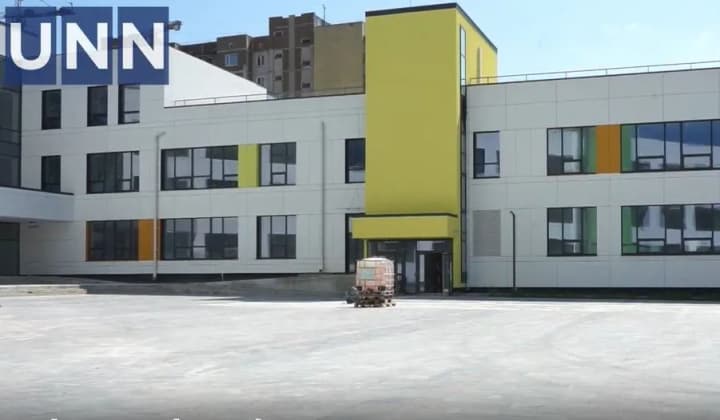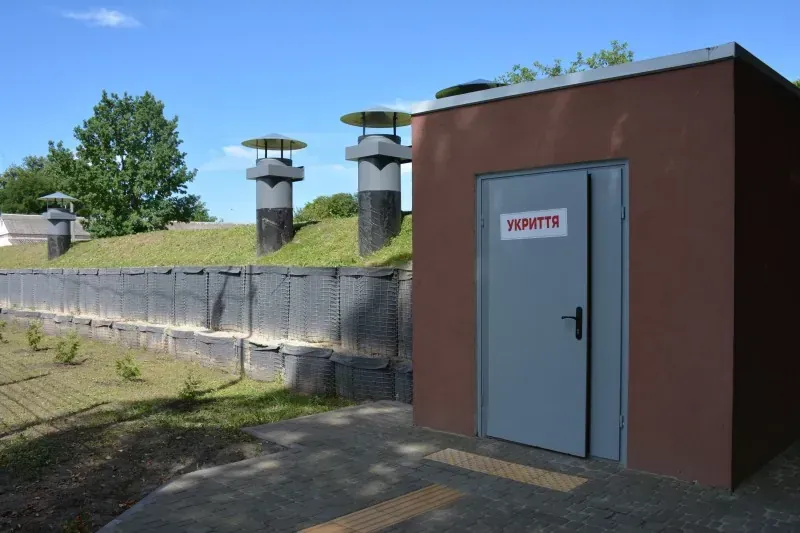Shelters and warning systems: how full-scale war has changed approaches to school construction and the organization of the educational process
Kyiv • UNN
The war has changed the requirements for school construction in Ukraine. The new facilities are equipped with shelters, warning systems and enhanced fire safety, allowing students to return to full-time education.

Since the beginning of the full-scale Russian invasion, more than 200 schools have been destroyed, and more than 1,600 secondary education institutions have been partially destroyed as a result of enemy attacks. Many students were forced to study remotely. However, no one has canceled preparations for the new school year, and despite the difficult situation, Ukraine continues to restore damaged schools and even build new ones, UNN writes.
According to World Bank estimates, about $14 billion is needed to fully restore all the institutions destroyed by the enemy.
Last year, more than 500 educational institutions were restored at the expense of the state budget, local budgets, and assistance from Western partners.
However, the construction of new educational institutions and the restoration of those damaged by Russian shells, missiles, and bombs now requires more investment. This is due to the strengthening of security measures included in the new state construction standards. In particular, these include the mandatory availability of modern shelters, air raid warning systems, and modernized fire safety systems.
The state partially compensates for these costs. Last year, the state budget allocated one and a half billion hryvnias for the construction of shelters in schools. This year, 2.5 billion is planned for this purpose. At the end of last year, almost 80% of schools in Ukraine were provided with shelters.
One of the most affected regions was Kyiv. Here, 244 schools, kindergartens, out-of-school and vocational education institutions were destroyed.
More than 120 schools have already been restored. As for shelters, there are currently 1285 shelters in schools and kindergartens in Kyiv region. As of the end of July, 67 more shelters were being repaired, and 4 more educational institutions are planning to install modular shelters. This will increase the number of places in shelters by more than 16 thousand.
In practice, this will allow students to attend school more actively and change distance or blended learning to full-time education. This is very important in the context of education quality. The results of the PISA-2022 international education quality survey show that Ukraine has educational losses. Minus 12 points in math, minus 38 points in reading, and minus 19 points in science, compared to the results of 2018. Against this backdrop, efforts to get students back to school are of particular importance.
On the eve of the new school year, this process looks quite successful in the Kyiv region. For example, the Yurivka Lyceum of the Hatnyanska community opened a 725-square-meter shelter that can accommodate 700 people at a time. There are 365 children studying here, mostly from the villages of Yurivka and Vita-Poshtova. A modern radiation shelter was recently opened in Brovary Lyceum No. 1. It is designed for 250 people and is equipped with everything you need: a generator, sanitary facilities, a medical unit, a food storage room, water supplies, and a modern ventilation system. The facility is also adapted for use by people with disabilities.

New, modern schools are also being built. And they are already taking into account safety requirements.
For example, the construction of a school in Brovary, which was planned in 2017, is being completed.
"Back in 2017, as part of the education reform, we planned to build a modern school for children in grades 1-4. Project documentation was prepared and approved. Work began in 2020," recalls Brovary Mayor Ihor Sapozhko.
It is clear that when the Russian occupiers were on the outskirts of Brovary, work on the facility stopped. Subsequently, we had to make changes to the project and look for additional funding.
Nevertheless, it is hoped that the nearly 400 million school will be completed by the end of this year, and nearly a thousand students will start studying in the new building.
"We still need to equip a modern shelter, a warning system, and upgrade the fire protection system. I hope that all the work will be completed by early 2025, and the school will open its doors to the first students. Currently, 80% of the interior work has already been completed. The school is designed for 960 students. It will have spacious modern classrooms, a sports and assembly hall, and recreation areas. In short, everything that a new type of school should have," said the mayor of Brovary.
Such schools will not only make the learning process more enjoyable and effective, but will also protect students from enemy attacks.